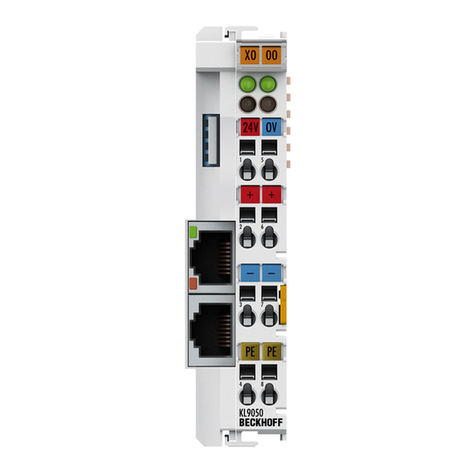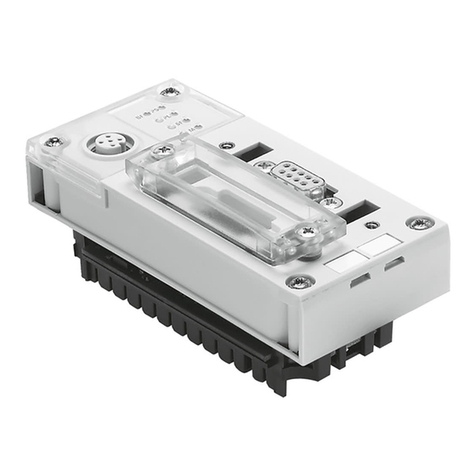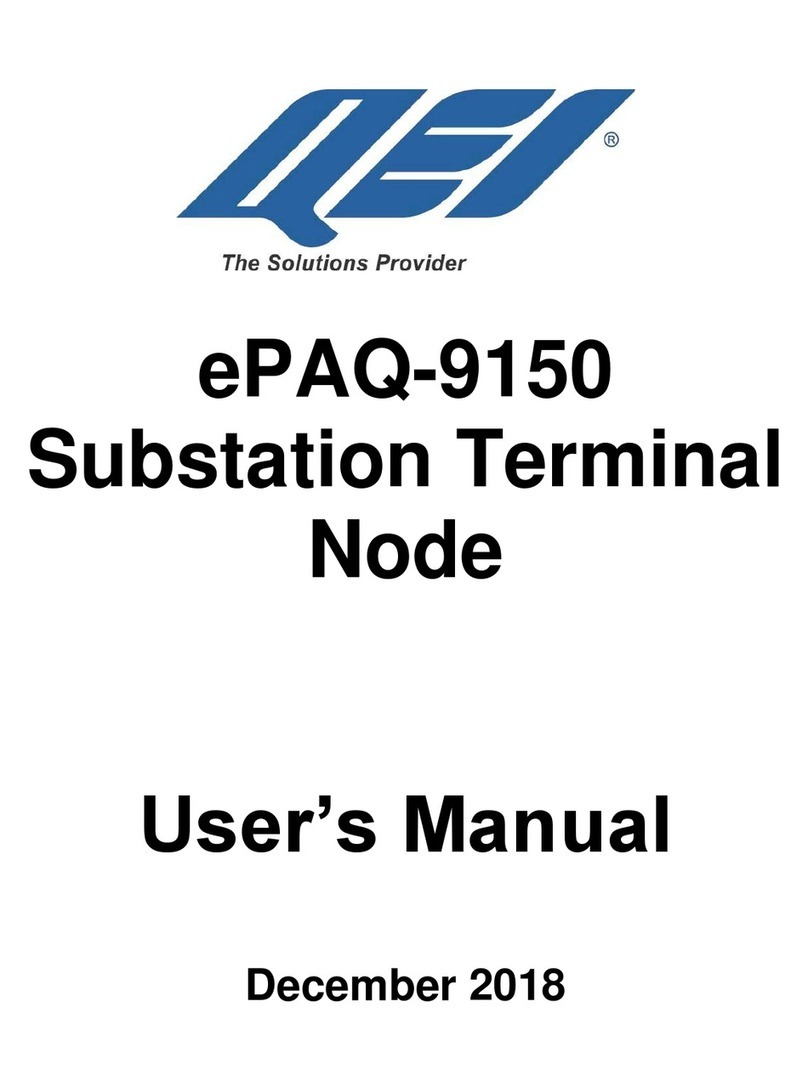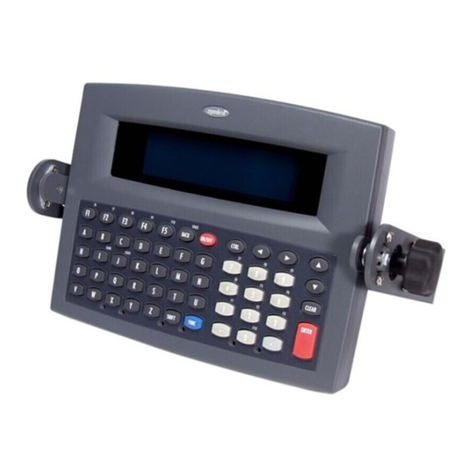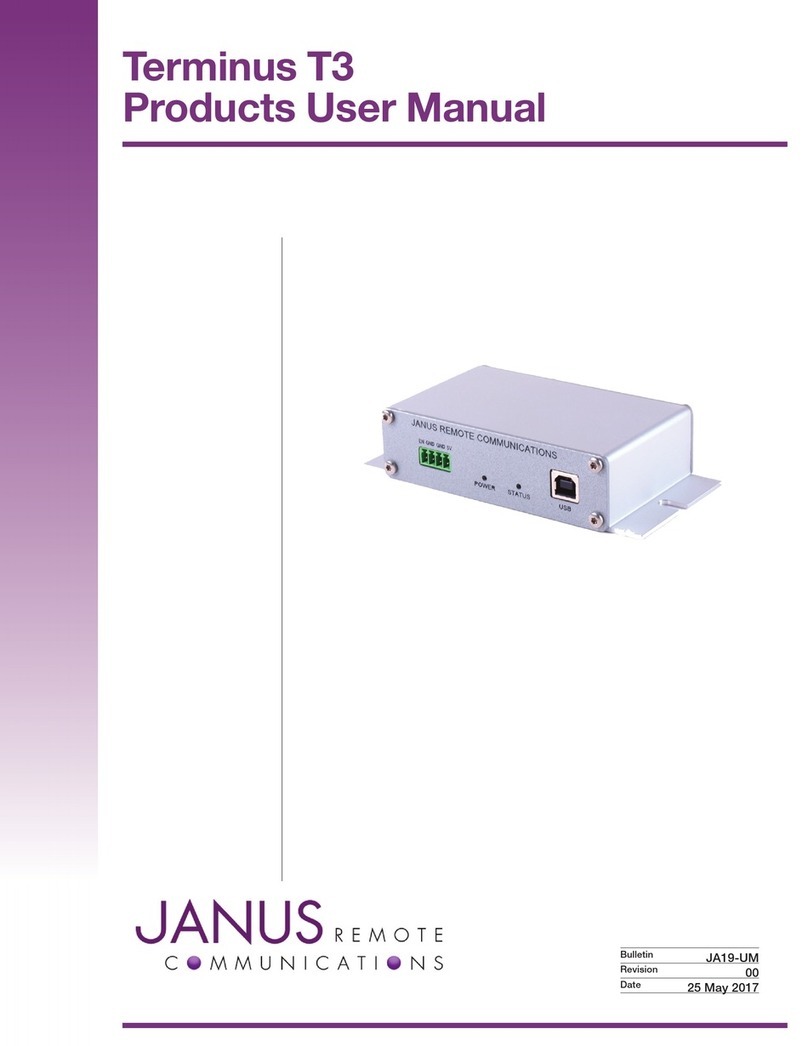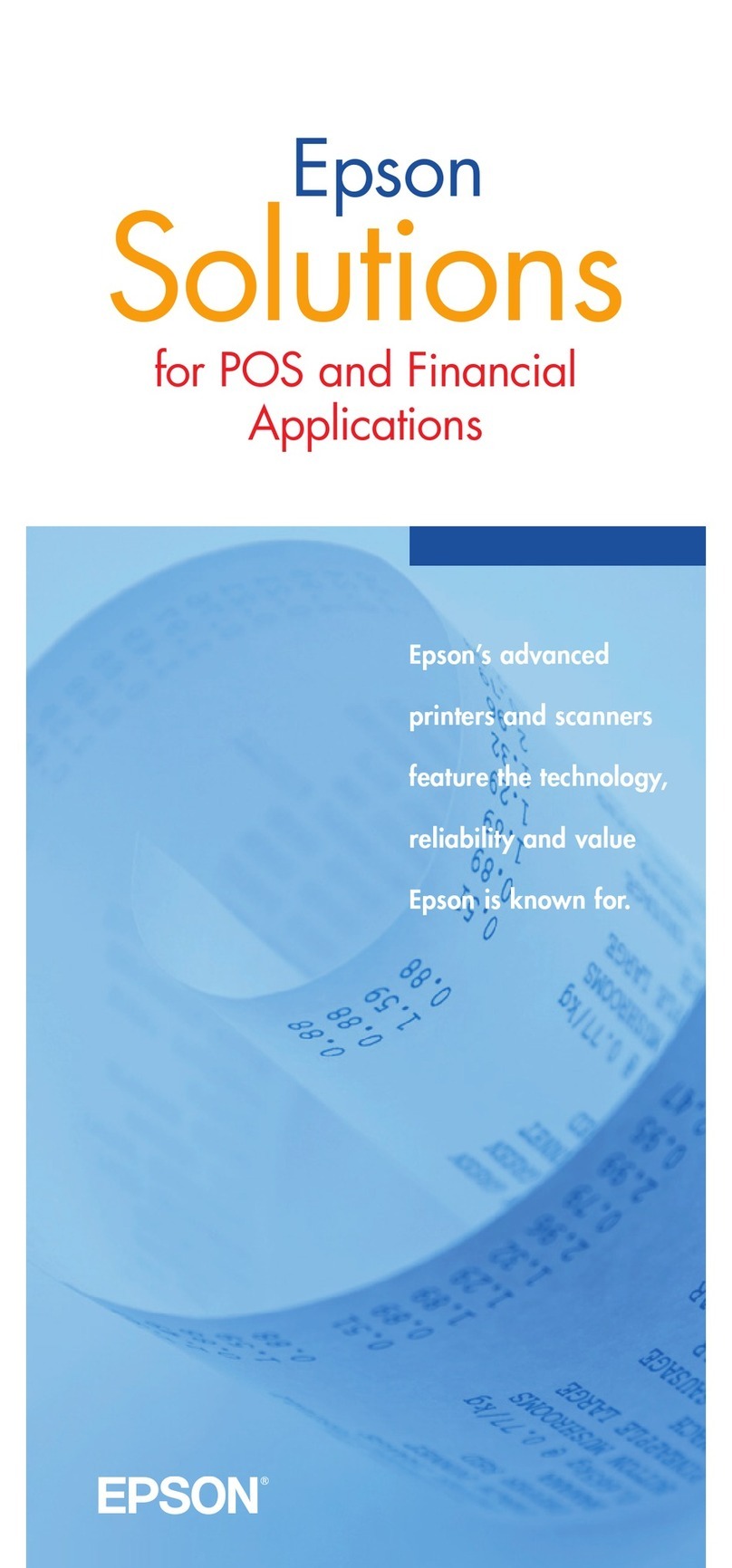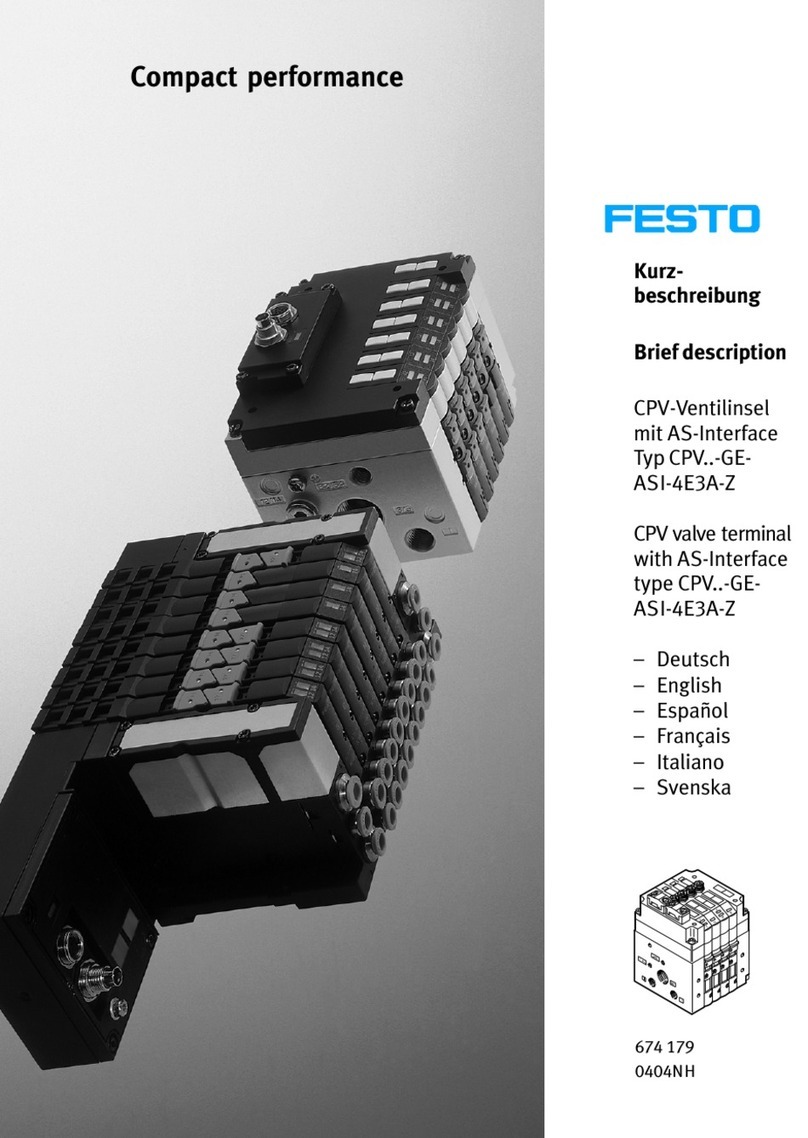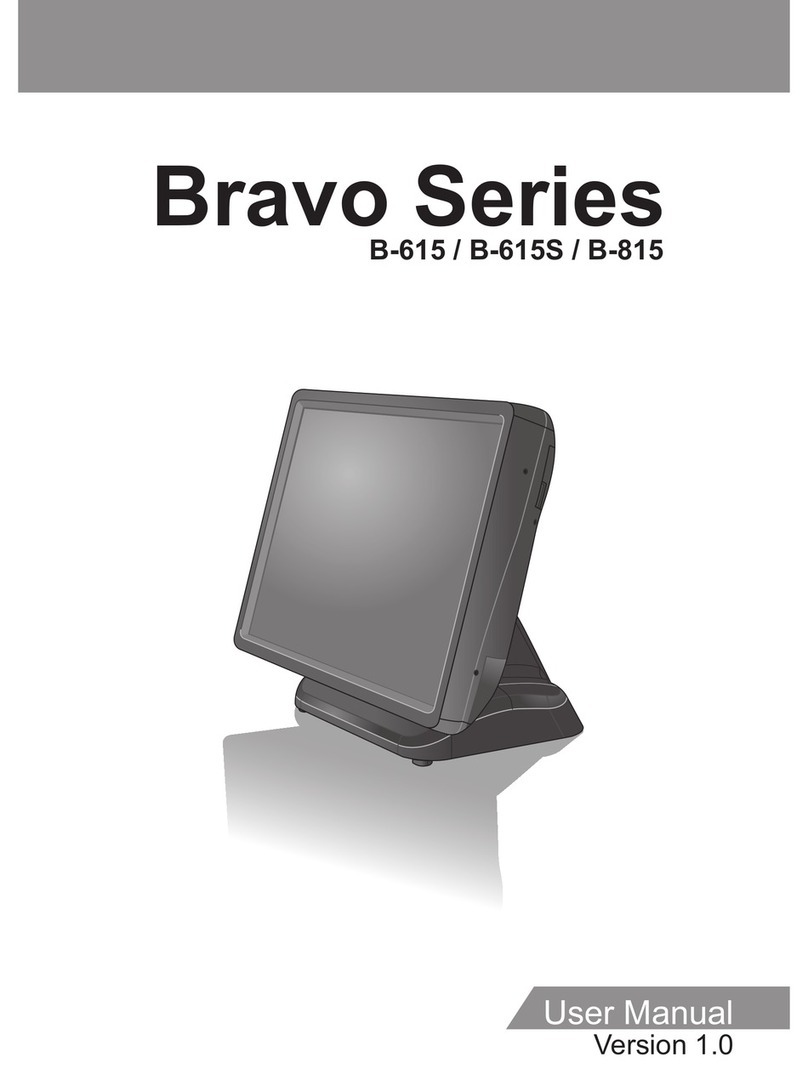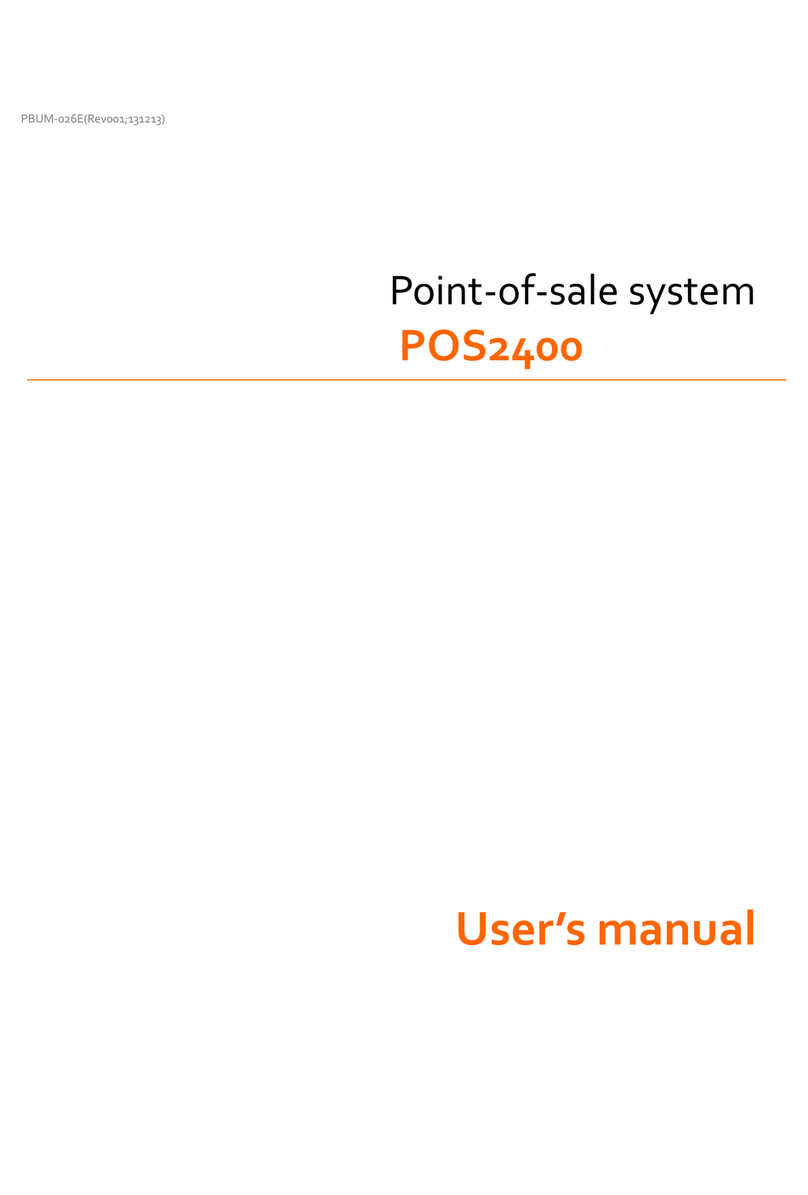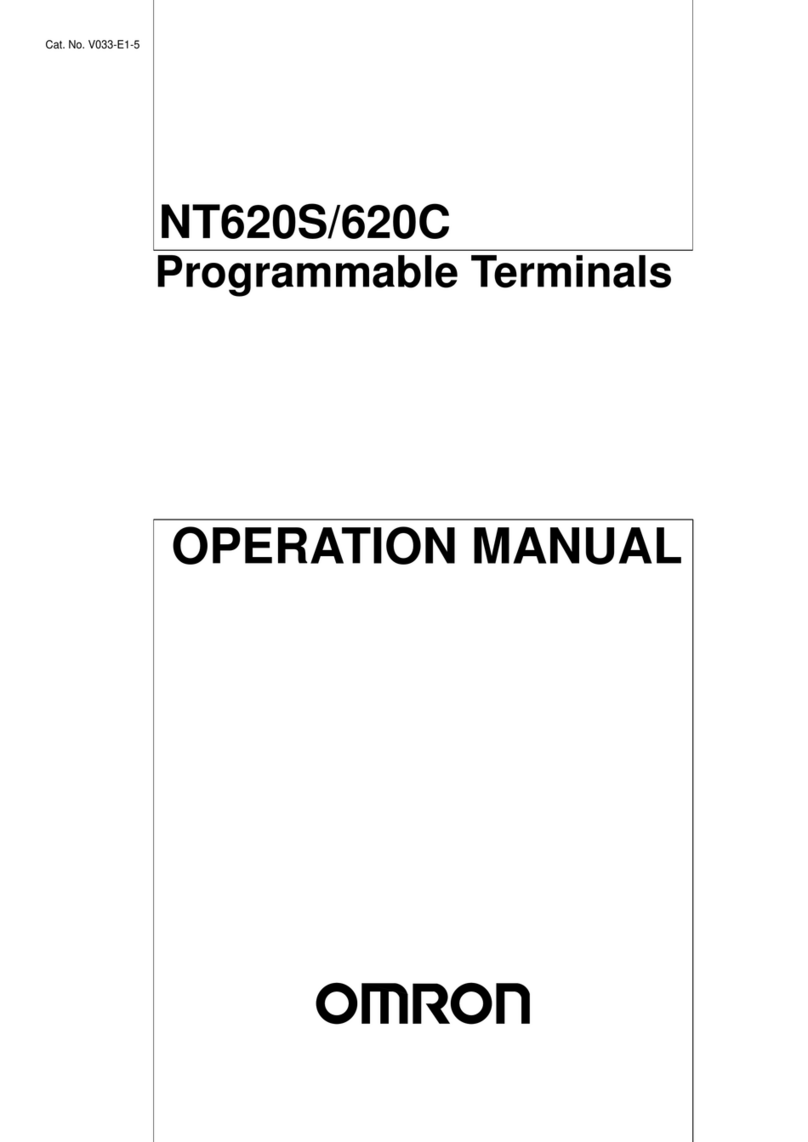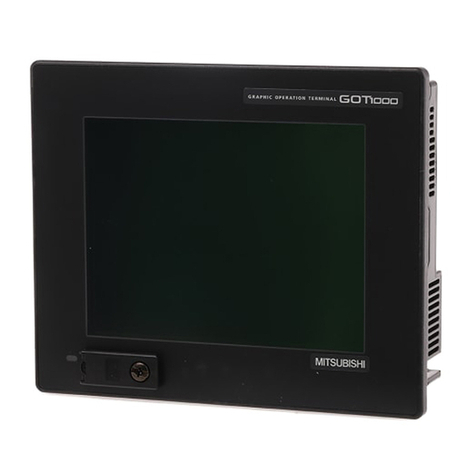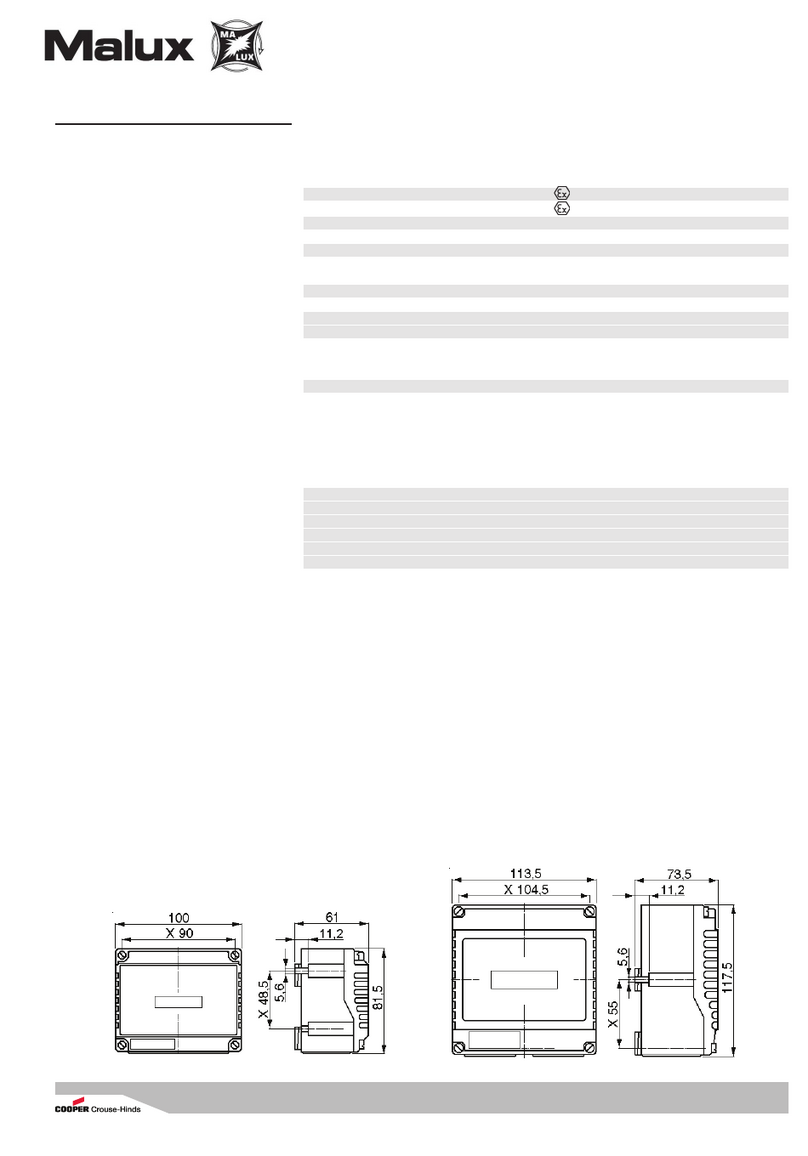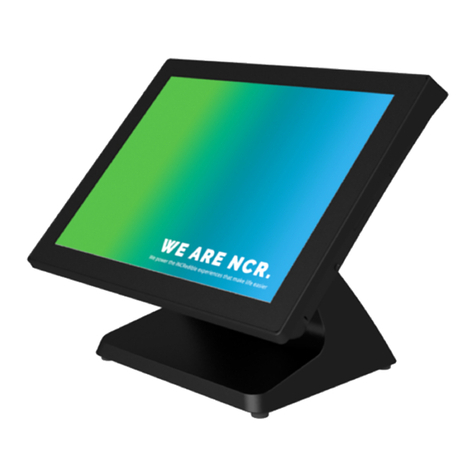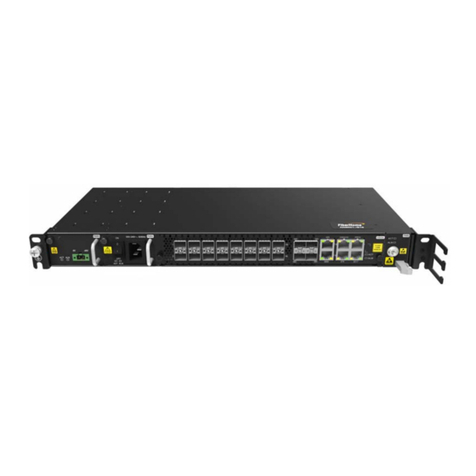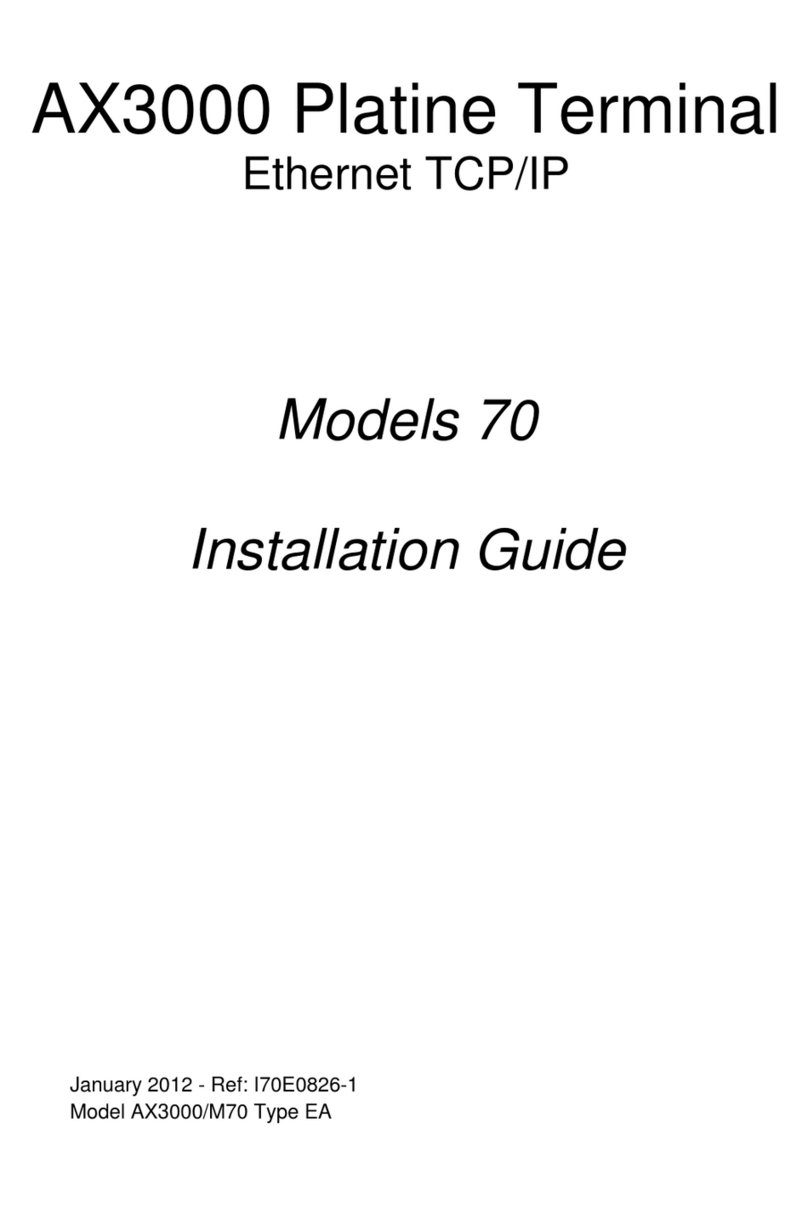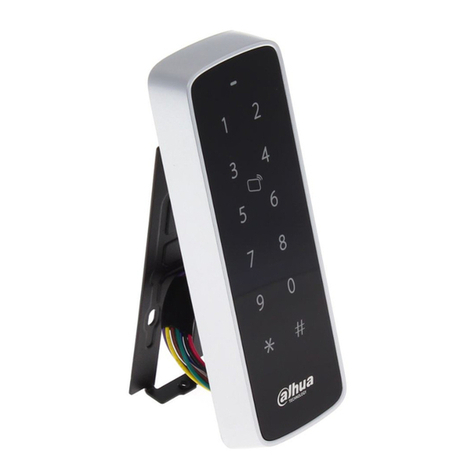Infoton VISTAR/GT User manual

VISTAR/GT
TECHNICAL
USER'S
MANUAL

GENERAL DESCRIPTION
The
Infoton
VISTAR
/
GT
is
a high-speed silent
interactive
display
terminal
designed
for
use
with
an
on
-line
computer
as
a
functional
and
operational
replacement
for
a
teletype
-
writer
.
Incorporated
into
each
VISTAR
/
GT
is
a
keyboard,
video
display,
control
and refresh
electronics
power
supply
and
both
an
RS
-
232C
and
current
loop
interface.
Operation
is
in
Roll
Mode
with
data always being entered
on
the
bot
-
tom
line.
DISPLAY CHARACTERISTICS
Characters/
Line
Lines/Display
Character Set
Character
Format
Character Size
Cursor
Refresh Rate
Viewing
Area
Color
Readability
Size
Weight
80
24
64
character
ASCII
(upper
case)
5 x 7
dot
matrix
(upper
case)
0.08"
x
.19"
nominal
Non-destructive
bl
ink
ing underscore
50
or
60
Hz
9"
x
7"
White
-P4
phosphor
Screen easily read
without
disruptive
reflections
in
100
foot
candle
illumination
13"
high,
19"
wide,
23"
long
35 pounds
Power 100
watts
105-
130
volt
s,
60
Hz
105
-
130
volts
or
210
-
260
volts,
50
Hz
(Export
Model)
Temperature
0°
to
50
° C (operating)
-
30
°
to
70
° C (storage)
Humidity
o
to
95
% non-condensing
MODE OF OPERATION
Full/Half
Duplex
Full
Duplex
-
Keyboard
output
to
outgoing
data line.
Display
input
from
incoming
data line.
Half
Duplex
-
Keyboard
output
to
display
and
to
data
line.
Display
input
from
keyboard
and data line.
Local/On-line
Local -Data line disconnected.
Operation
as
in
Half
Duplex.
On-Line
-Data line connected.
Roll
Roll
-When
the
format
rolls
up
one
line,
the
former
top
line
of
display
is
lost;
the
bottom
line
is
blank.
COMMAND
FUNCTIONS
Erase Screen
(Control
L)
Line
Feed, Carriage
Return
Rub
Out
Bell
(70th
character
position)
INTERFACE
The
VISTAR
/
GT
provides
both
an
EIA
RS
-
232C
and a
20
or
60
milliampere
current
loop
interface
with
START
/STOP
character
format
. Eleven
internally
generated,
switch-
selectable transmission speeds and
one
externally
controlled
speed are possible.
Full
duplex
/
half
duplex
operation
and
parity
generation are
switch
selectable.
Transmits
and
receives
10
or
11
bit
code.
Switch-selectable data rates are
75,
110,
150
,
300,
600,
1200,
1800,
2400,
4800,
7200,9600
bits
per second and
External.
The
External
setting allows a data rate
of
up
to
1800
characters per second.
External
timing
is
derived
from
a
TTL
compatible
pulse source at 16
times
the
data rate.

KEYBOARD
Layout
-
The
VISTAR
/
GT
keyboard
layout
is
similar
to
that
of
a
Model
35 KSR
Teletype
@.
Rollover
-
when
one
key
is
already depressed and a second
key
is
then
depressed,
the
code
for
the
second
key
will
not
be
generated
until
the
first
key
is
released .
Repeat -
when
a code
of
function
-generating
key
is
depressed along
with
Repeat
key,
the
code
or
function
will
be repeated
at a rate
of
10
per second.
I " .:# , 0 1 a , ( )
~
=10
HERE
I 2 3 4 5 6 7 8 9 0 . -
IS
.
WRU
TAPE +A-P-E-
TAB
~
@
LIN
E
ESC
Q w E R T y U 1 0 P
RET
FEED
X-OFF
EaT
RU
BELL
[ \ +
RUB
CTRL
REPT
BRK
A S 0 F G H J K L .
OUT
J
t ] < > ?
SH
IFT Z X C V B N M / S HI
FT
J .
SPACE
BAR
CODE SET
The
following
codes are used
as
indicated in
the
VISTAR
/
GT
.
Bits
Bits
7,6,5
4,3,2,1
000
001
010
011
100
101
110
111
r-----
-,
0000
NULL
SPACE 0 @ P I @ P
0001 1 A Q I A Q
0010
2 B R I B R
I
0011 # 3 C S I C S
0100
$ 4 D T I D T
0101 % 5 E U I E U
0110
& 6 F V I F V
I
0111
BELL
7 G W I G W
1000
8 H X I H X
I
1001 9 Y I y
1010
LF
J Z J Z
1011
ESC
+ K K
1100
ERASE
< L \ L \
PAGE
1101 CR M M
1110
> N
""
N
""
? a a r--......J
1111 + I
RUB
L
__
.....J
OUT
The
area enclosed
by
dashed lines represent
lower
case
codes displayed
as
upper
case
characters.
The
Rub
Out
code moves
the
cursor
to
the
left
one
position
.
C F 18 8
22
10
2(0
7S?
IC
'I
\0


INFOTON INCORPORATED •
SECOND
AVENUE, BURLINGTON, MASSACHUSETTS 01803 • AREA
CODE
617 272·6660
SUBSIDIARY OF OPTICAL SCANNING
CORPORA
TION
Document No. 02421
June/1973
·VISTAR/GT
TECHNICAL
USER'S
MANUAL

INFOTON INCORPORATED • SECOND AVENUE, BURLINGTON, MASSACHUSETTS 01803 • AREA
CODE
617
272·6660
SUBSIDIARY OF OPTICAL SCANNING CORPORATlON
ii

1.
2.
3.
4.
5.
6.
INFOTON INCORPORATED • SECOND AVENUE, BURLINGTON, MASSACHUSETTS 01803 • AREA
CODE
617 272·6660
SUBSIDIARY OF OPTICAL SCANNING
CORPORA
TlON
INFOTON
TECHNICAL USER'S
MANUAL
VISTAR/GT
TABLE OF CONTENTS
INTRODUCTION
SUMMARY
OF
CHARACTERISTICS
Interchangeability
with
Teletype@
Easy-to-Read Characters
High-Speed Transmission Rates
Choice
of
Computer Interface
Roll Mode
Transmission Mode
VISTAR/GT
SPECIFICATIONS
Screen
Format
Mechanical
Environmental
Controls, Switches and Connectors
Electrical
FUNCTIONAL
DESCRIPTION
Local/On Line
Character Mode
OPERATIONAL
FEATURES
Teletypewriter
Compatibility
Cursor
Roll Mode
Response
to
Commands
Erase
Screen
Bell
Carriage Return
Line
Feed
Null
Break
Rubout
EQUIPMENT DESCRIPTION
Keyboard
Display
Control Logic
Controls
Page
No.
1
2
2
2
2
2
2
2
3
3
3
3
3
3
4
4
4
5
5
5
5
6
6
6
6
6
6
6
6
7
7
8
8
10
@ Registered trademark
of
Teletype Corporation
iii

INFOTON INCORPORATED •
SECOND
AVENUE, BURLINGTON, MASSACHUSETTS 01803 • AREA
CODE
617 272-6660
SUBSIDIARY OF OPTICAL SCANNING
CORPORA
TlON
7.
8.
9.
TABLE OF CONTENTS -Continued
INTERFACE
Introduction
Asynchronous Serial Interface
Wiring
of
Current Loop Interface
COMPATIBILITY
WITH
INFOTON
VISTA
SERIES
DISPLAY
TERMINALS
OPERATING
INSTRUCTIONS
Initial
Setup
Establish Communication
Appendix A -
VISTAR/GT
Code Set
Appendix
B -
VISTAR/GT
Input-Output
Codes
Appendix
C - MUltipurpose Asynchronous Serial Interface
E
IA
Signals and Pin Connections
Appendix
0 -
I/O
Rates
as
a
Function
of
Distance
LIST OF FIGURES
Figure 1-1.
VISTAR/GT
Display Terminal
Figure 6-1.
VISTAR/GT
Keyboard
Figure 6-2.
Dot
Matrix
Character
Format
Figure 6-3.
Dot
Matrix
with
Cursor
Figure 6-4. Location
of
TV
Controls on
VISTAR/GT
Figure 7-1.
VISTAR/GT
Interface
Panel
Figure 7-2. Wiring
to
VISTAR/GT
Current
Loop
Terminal
Strip
iv
Page
No.
11
11
11
14
15
16
16
16
17
18
22
23
1
7
9
9
10
12
14

INFOTON INCORPORATED • SECOND AVENUE, BURLINGTON, MASSACHUSETTS 01803 • AREA
CODE
617
272·6660
SUBSIDIARY OF OPTICAL SCANNING
CORPORA
TION
1.
INTRODUCTION
Figure
1-1
VISTAR/GT*
Display Terminal
The
INFOTON
VISTAR/GT
Display Terminal
is
an
alphanumeric display designed
for
use
with
an
on-line
computer
as
a high speed, silent, interactive terminal device.
It
can
be
utilized
as
a substitute
for
a Teletype ® in
an
unbuffered (character-by-character) conversational mode. As a completely
self-contained desk-top
unit,
the
VISTAR/GT
is
ideally suited
for
high speed,
two
way data trans-
mission over common voice grade telephone lines. Incorporated
into
each
unit
is
a keyboard, power
supply, video presentation
control,
refresh electronics and
both
an
RS-232C and current
loop
inter-
face
for
on-line connection
to
a dataphone, computer
or
teletype.
*Glass Teletypewriter
1

INFOTON INCORPORATED •
SECOND
AVENUE, BURLINGTON, MASSACHUSETTS 01803 • AREA
CODE
617
272·6660
SUBSIDIARY OF OPTICAL SCANNING
CORPORA
TlON
2. SUMMARY
OF
CHARACTERISTICS
INTERCHANGEABILITY
WITH TELETYPE®
TheVISTAR/GT
can
be
substituted
for
a Model 33
or
35 Teletype®
with
no hardware
or
software modifications. The
VISTAR/GT
can
serve
as
an
upgraded high
speed
terminal
to
all time-sharing services using ASCII * Code regardless
of
the computer system
used
by
the
service.
EASY-TO-READ CHARACTERS
High resolution, non-reflecting screen, and contrast-enhancing
filter
permit
easy
viewing at
distances up
to
10 feet under direct glare and 100 foot-candle
illumination.
HIGH-SPEED TRANSMISSION RATES
Eleven switch-selectable transmission rates
from
75
to
9600 bits per second
are
provided.
CHOICE OF COMPUTER INTERFACE
The
unit
is
supplied
with
two
forms
of
asynchronous serial interfaces; i.e., a standard E
IA
RS-232C interface and a 20
or
60
ma
TTY
style current loop.
ROLL MODE
The
VISTAR/GT
is
operated in the Roll Mode
with
all data entering
from
the
bottom
line.
With
each
new line
of
data the screen presentation
will
roll up one line.
TRANSMISSION MODE
The
VISTAR/GT
is
operated in a character-by-character transmission mode, exactly
as
a
Teletype®.
*
American
Standard Code
for
Information
Interchange.
2

INFOTON INCORPORATED • SECOND AVENUE, BURLINGTON, MASSACHUSETTS 01803 • AREA CODE 617 272-6660
SUBSIDIARY OF OPTICAL SCANNING CORPORA TlON
3.
VISTAR/GT
SPECIFICATIONS
SCREEN
FORMAT
Characters per line
Lines per display
Character set
Character
format
Character
size
Refresh rate
Viewing
area
Color
Readability
MECHANICAL
Size
Weight
ENVIRONMENTAL
Operating temperature
Storage temperature
Humidity
80
24
64 character ASCII upper
case
5 x 7
dot
matrix
0.08 inch x 0.19 inch, nominal
50
Hz
or
60 Hz
9 inches x 7 inches
Wh
ite -
P4
phosphor
Screen
easily
read
without
disruptive reflections in a
100-foot
illumination.
13 inches high, 19 inches wide, 23 inches deep
35 pounds
0°
to
50°C
-30°
to
70°C
o
to
95% non-condensing
CONTROLS, SWITCHES
AND
CONNECTORS
On/Off
Switch
Local/On Line Switch
TV
Intensity
TV
Horizontal
TV
Vertical
Data Rate Selector
Full/Half
Duplex Switch
10/11
Bit
Code Switch
Odd/Even/Mark Parity Switch
Current Loop Wiring
Strip
EIA
Connector
115/230
Volt
Wiring Connections
50/60
Hz Refresh Switch
ELECTRICAL
Power consumption
Domestic power
Export
power
STANDARDS
Underwriter's
Laboratory
Front
Side Rear Internal
X
X X
X
X X
X
X
X
X
X X
X
100 watts
105 -130 volts; 60 Hz
105 -
130,210
-
260
volts; 50 Hz
Export
models
will
conform
to
requirements established
by
British Post Office Telecommunications
Headquarters, the standards
of
the Verein Deutscher Elektrotechniker
(VDE),
and the Canadian
Standards Association (CSA).
3

INFOTON INCORPORATED •
SECOND
AVENUE, BURLINGTON, MASSACHUSETTS 01803 • AREA
CODE
617 272-6660
SUBSIDIARY OF OPTICAL SCANNING
CORPORA
TlON
4.
FUNCTIONAL
DESCRIPTION
The
VISTAR/GT
Display Terminal
is
a completely self-contained desk
top
unit
which
can
be
used
as
a plug-for-plug replacement
for
a Teletype@. The
unit
consists
of
a keyboard,
video
monitor,
refresh memory,
control
logic, and serial data interface. The modes
of
operation and communications
are
described in the
following
paragraphs.
LOCAL/ON
LINE
In
LOCAL,
the
VISTAR/GT
is
disconnected
from
the data line
but
is
functional in all other
respects. The
LOCAL
position
is
used
only
for
demonstration and testing purposes. The
LOCAL/ON
LINE
selection
is
made
by
aswitch on the
front
panel
of
the terminal.
The remainder
of
this description refers
to
various types
of
ON LINE operation.
DATA
FLOW
The keyboard communicates
only
to
the interface transmitter, and
only
the interface
receiver communicates
to
the display memory.
All
transmissions
are
on a character-by-
character
basis.
All
codes generated
by
the keyboard, including
control
or
function
codes,
go
directly
to
the transmitter and then
to
the data lines.
The
VIST
AR/GT
may
be
placed in
full
or
half
duplex. In
half
duplex, the interface receiver
is
actuated in
series
with
the transmitter, and transmitted codes
are
routed back through
the receiver and displayed. Control codes either perform
their
specific
function
(e.g.,
BE
LL,
LINE FEE
D,
etc.)
or
are
ignored.
In
full
duplex, the receiver
is
independent
of
the transmitter.
Only
data received
from
the
data line
will
appear on the display. As in
half
duplex, control codes either perform
their
specific
function
or
are
ignored. In
full
duplex, therefore,
information
will
be
displayed
only
if
the computer at the end
of
the data line echoes back the
information
transmitted
from
the keyboard.
4

INFOTON INCORPORATED •
SECOND
AVENUE, BURLINGTON, MASSACHUSETTS 01803 • AREA
CODE
617
272-6660
SUBSIDIARY OF OPTICAL SCANNING CORPORA TlON
5. OPERATIONAL
FEATURES
TELETYPEWR
ITER
COMPATI
BI
LITY
The
VISTAR/GT
reacts
to
the
full
ASCII character set
(see
Appendix A) receiving both
upper and lower
case
codes. The effect
of
each
ASCII code on the
VISTAR/GT
is
shown in Appendix
B.
All
characters
are
displayed
as
upper
case
characters. Lower
case
characters received on the data line
are
stored in memory and
are
displayed
as
upper
case
characters. Although the terminal may
be
programmed
as
a teletypewriter, the
full
advantages
of
the
VISTAR/GT
as
an
interactive terminal
are
realized when the soft-
ware makes
full
use
of
the
unit's
features described in the
following
sections:
CURSOR
The cursor indicates the position at which the
next
data character
will
be
displayed and
is
always on the
bottom
line.
The cursor appears on the display screen
as
a blinking underscore, blinking approximately
five times a second. The
blinking
prevents the operator
from
losing track
of
the cursor.
The cursor
will
advance one step
for
each
character
that
is
typed. The Carriage Return,
Rub Out,
and
Line
Feed
codes also generate cursor movements.
The actual position
of
the cursor cannot
be
directly
read
by the computer. However)
since all cursor movements entered
by
the operator via the keyboard
are
transmitted
to
the
computer, the computer
can
at
all times
follow
the position
of
the cursor. This feature
allows software editing on a
page
of
textual data
on
the screen.
ROLL
MODE
The
VISTAR/GT
is
always in Roll Mode. When the screen fills, the data on the
screen
rolls up one line; the
former
top
line
is
lost
and
the
bottom
line
is
blank. As line after
line
of
text
is
written
on the screen, the visual effect
is
that
of
a continuous scroll
of
text
moving past awindow.
Rolling
is
caused
when a
LINE
FEED character
is
received by the terminal. Rolling
is
also
caused
when the cursor
is
in the right corner
of
the screen and any displaying code including
SPACE
is
received.
The
VISTAR/GT
has
been
designed
so
that
no
restrictions
are
placed
on
the high
speed
transfer
of
data in the roll mode. Data
will
not
be
lost
even
at
9600
bits per second.
RESPONSE
TO
COMMANDS
The
VIST
AR/GT
terminal
is
controlled
and
manipulated
from
its data stream. The data
stream
control
logic
is
defined
as
follows:
1.
Certain characters
are
designated
as
command characters (Appendix B).
2.
The computer inserts these command characters
within
the
text
transm
itted
to
the
VISTAR/GT.
3.
The
VISTAR/GT
continually
monitors the
input
data stream
for
these
command characters, performing a designated action upon reception
of
a
command character.
A description
of
the commands
used
to
control the display follows.
5

INFOTON INCORPORATED •
SECOND
AVENUE, BURLINGTON, MASSACHUSETTS 01803 • AREA
CODE
617
272·6660
SUBSIDIARY OF OPTICAL SCANNING CORPORATION
ERASE SCREEN
BELL
All
data
on
the
screen
is
erased. Cursor moves
to
first position
of
last line. This
code
is
generated
from
the
keyboard
by
"Control
L".
The
bell will
sound
for
the
following
conditions:
A.
Receipt
of
the
Bell Code (Control
G)
from
the
data
line.
B.
The
movement
of
the
cursor
into
the
70th
position on a line.
CARRIAGE
RETURN
Places
the
cursor
in left-most position
of
the
bottom
line.
LINE
FEED
NULL
Moves all
data
on
the
screen
up
one
line.
The
cursor
does
not
move.
No
action
is
taken
when
this
code
appears on
the
data
line. This
code
is
generated from
the
keyboard
by
"Control
Shift
P".
BREAK
Depressing
the
break key forces a
"space"
condition
on
the
data
line as long as
the
key
is
depressed.
RUBOUT
Causes a
rubout
code
(all
one
bits)
to
be
transmitted.
Cursor backspaces
one
position
and'
no
character
enters
memory.
6

INFOTON INCORPORATED •
SECOND
AVENUE, BURLINGTON, MASSACHUSETTS 01803 • AREA
CODE
617
272·6660
SUBSIDIARY OF OPTICAL SCANNING CORPORA TION
6.
EQUIPMENT
DESCRIPTION
The
basic
VISTAR/GT
unit
logically and physically consists
of
three
parts; keyboard, display
and
control.
These
components
and
the
controls
and indicators on
the
unit
are described
in
this section.
KEYBOARD
The
operator
interacts with
the
VISTAR/GT
and
the
computer
via
the
keyboard
shown
in
Figure 6-1.
LINE
I
ON
B
.00,·8
LOCAL U
OFF
SPACE
BAR
Figure
6-1
VISTAR/GT
Keyboard
The
VISTAR/GT
keyboard
is
composed
of
a
set
of
53
keys identical
in
placement
to
those
of
a Model 35KSR Teletype@; a POWER
ON/OFF
switch and a LINE/LOCAL switch.
Appendix
B illustrates
the
full
code
set,
how
to
generate
the
codes from
the
keyboard,
and
the
effect
of
the
codes on
the
display.
Both
the
SH
I
FT
key and
the
CTRL (Control) key establish a
mode
for
the
keyboard;
Le.,
data
is
not
actually generated until a
coded
key
is
depressed. Depressing
the
SH
I
FT
key in
conjunction
with
another
key causes
upper
case characters
to
be
transmitted.
The
keyboard
on
the
VISTAR/GT
generates
upper
case codes for
the
alphabetic characters
whether
or
not
the
SHIFT
key
is
depressed.
The
lower case codes are
not
generated by
the
VISTAR/GT
keyboard.
For
operator
convenience,
two
SH
IFT keys are on
the
keyboard. Each
of
these
keys has
the
same
effect
on
the
data.
Control codes
do
not
display on
the
screen,
but
in
most
applications are used as
function
codes.
Some
of
the
control
codes have been used as
functions
for
the
VIST
AR/GT.
For
example, Control L erases
the
screen.
The
HERE
IS
key
is
inoperative since
no
answerback
function
is
offered
for
the
VISTAR/GT.
The
REPEAT key when depressed
in
conjunction
with a
coded
key
or
function key gen-
erates repeated transmission
of
the
code
or
function
at
a rate
of
10
per
second.
The
BREAK key places
"space";
i.e., a logical
"0"
condition,
on
the
data line
for
as long
as
the
key
is
depressed.
7

INFOTON INCORPORATED •
SECOND
AVENUE, BURLINGTON, MASSACHUSETTS 01803 • AREA
CODE
617
272-6660
SUBSIDIARY OF OPTICAL SCANNING
CORPORA
TlON
The
keyboard
has an interlock
feature
and
a roll-over
feature
which govern
operation
when
two
coded
keys are
simultaneously
depressed.
When
one
key
is
depressed
and
a
second
key
is
subsequently
depressed,
the
code
for
the
second
key
will
not
be generated until
the
first key
is
released. No
codes
are generated
if
two
or
more
keys are depressed
simultaneously.
DISPLAY
The
display screen
is
a
cathode
ray
tube
(CRT)
with
a P4 (white)
phosphor.
The
viewing
area
of
the
display
is
9 inches wide
and
7 inches high.
The
screen
format
is
24
lines, each
80
characters
long.
The
displayed
characters
are
white
on
a
dark
background.
The
characters
are generated
on
the
display surface
50
or
60
times
per
second
to
provide flicker-free viewing.
Characters
are displayed
on
the
screen
in
a
rectangular
array
(i.e.,
horizontal
lines
and
vertical
columns). Each
of
the
possible
character
positions
on
the
display consists
of
a 7 x
10
matrix.
The
5 x 7
dot
matrix
format
is
illustrated in Figure 6-2
for
the
letters J
and
K.
The
dot
matrix
forming
the
character
is
always
in
the
upper
left
portion
of
the
7 x
10
matrix.
The
position
of
the
cursor
within
the
7 x
10
matrix
is
illustrated in Figure 6-3.
CONTROL LOGIC
The
Control
Logic
contains
the
logic,
power
supply,
central
timing
and
control,
refresh
memory,
character
generator,
and
communications
interface.
The
most
important
functions
of
the
Control
Logic are:
•
Stores
in a refresh
memory
all
data
received.
• Converts
the
ASCII
characters
into
dot
matrix
form
and
presents
them
on
the
CRT.
• Maintains
the
display
by
refreshing
the
image
at
the
rate
of
50
to
60
times
per
second.
• Provides
the
electrical
interface
between
the
electrical
operating
levels
of
the
VISTAR/GT
and
the
equipment
with
which
the
terminal
is
operating.
The
interface
is
described in detail in
Section
7.
• Decodes
command
codes
received
on
the
data
Iine
and
performs
the
appropriate
function.
8

INFOTON INCORPORATED • SECOND AVENUE, BURLINGTON, MASSACHUSETTS 01803 • AREA
CODE
617 272-6660
SUBSIDIARY OF OPTICAL SCANNING CORPORA TlON
+ + + + +.+ + +.+ + + +.+ + +
+ + + + +.+ + +.+ + +.+ + + +
+ + + + +.+ + +.+ +.+ + + + +
+ + + + +.+ + +.+.+ + + + + +
+.+ + + +.+ + +.+ +.+ + + + +
+.+ + + +.+ + +.+ + +.+ + + +
+
+.+.+.+
+ + +.+ + + +.+ + +
+++++++++++++++
+++++++++++++++
+++++++++++++++
+++++++++++++++
Figure 6-2
Dot
Matrix
Character Format
+ + + + + + + +.+ + + +.+ + +
+ + + + +:+ + +.+ + +.+ + + +
+ + + + +.+ + +.+ +.+ + + + +
+ + + + +.+ + +.+.+ + + + + +
+.+ + + +.+ + +.+ +.+ + + + +
+.+ + + +.+ + +.+ + +.+ + + +
+
+.+.+.+
+ + +.+ + + +.+ + +
+++++++++++++++
+++++++++++++++
CURSOR~+
+ + + + + + + + + + + + + +
+++++++++++++++
Figure 6-3
Dot
Matrix
with
Cursor
9

INFOTON INCORPORATED •
SECOND
AVENUE, BURLINGTON, MASSACHUSETTS 01803 • AREA
CODE
617
272-6660
SUBSIDIARY OF OPTICAL SCANNING CORPORA TION
CONTROLS
The
following
two
operator controls
are
located on the
front
panel in the plane
of
the
keyboard
(See
Figure 6-1):
• POWER
ON/OFF
Switch -In the OFF position, power
is
not
connected
to
the
terminal. In the ON position the terminal
is
in the operating state.
After
the
switch
is
turned
to
ON, a 3D-second warm-up period
is
required. A light,
built
into
the switch, glows when the switch
is
in the ON position.
•
LOCAL/LINE
Switch -This switch determines whether the terminal
is
dis-
connected
from
the data line
(LOCAL)
or
connected
to
the data line
(LINE).
The three controls which govern the video presentation
of
characters
are
placed
on
the
side
of
the
unit
to
the operator's left. The I
NTENSITY
knob
permits the brightness
of
the screen
to
be
set
for
the operator's
comfort.
The
HORZ
and
VERT
controls allow
adjustment
for
a stable picture. They correspond
to
the controls
normally
found on a
commercial television receiver. Once these controls
are
set,
they
require infrequent
adjustment.
The placement
of
the video presentation controls
is
shown in Figure 6-4 below.
VERT
HORZ
INTENSITY
L-HOLD~
Figure 6-4 Location
of
Video Presentation Controls on
VISTAR/GT
(Side
View
of
VISTAR/GT)
10

INFOTON INCORPORATED •
SECOND
AVENUE, BURLINGTON, MASSACHUSETTS 01803 • AREA
CODE
617 272·6660
SUBSIDIARY OF OPTICAL SCANNING CORPORA TlON
7.
INTERFACE
INTRODUCTION
The
VISTAR/GT
operates
with
a
computer
over
either
telephone
lines (via a
modem)
or
on
local
connection
by
direct
cable.
The
signal
interface
accommodates
a
wide
range
of
computer
systems
and
a wide range
of
data
rates.
This
has been accomplished by adhering
to
commonly
accepted
standards
for
data
transmission mode, transmission
method
(asynchronous)
and transmission rate.
There
are
no
restrictions
imposed
by
data
rate
limits
upon
any
of
the
command
codes
of
the
VISTAR/GT.
Thus
cursor
movement
com-
mands, erase
commands,
etc,
may
be
executed
at
the
maximum
rate
at
which
the
terminal
can
accept
ordinary
displaying codes.
The
Interface
Modu
Ie
makes
the
necessary conversion
between
the
electrical
operating
levels
of
the
VISTAR/GT
and
those
of
the.e>,<ternal
circuit
or
computer
with
which
the
Interface Module
is
designed
to
operate.
Also,
the
interface
arranges
data
in
the
format
required
by
the
circuit
or
computer.
ASYNCHRONOUS
SERIAL
INTERFACE
The
VISTAR/GT
communicates
in
a bit-serial,
character
asynchronous
mode.
The
term
asynchronous
is
synonymous
with
START-STOP
and
implies
that
the
receiver
comes
to
rest
between
characters.
The
STA
RT
bit
allows
the
receiving device
to
initiate
its
timing
in
proper
synchronism
with
the
incoming
data.
The
STOP bit(s)
ensure
that
the
communi-
cation
line
is
returned
to
the
mark
condition
ready
for
a
new
START.
Transmitted
data
characters
contain
10
or
11
bits,
depending
on
the
setting
of
a switch.
(The Model
33
and
35
Teletype@
terminals
transmit
11-bit code.)
In
receiving,
the
VISTAR/
GT will
operate
with
10
or
11-bit
formats.
It
is
customary
to
use an
11-bit
format
at
110
bits
per
second
or
below,
and
10
bits
at
higher speeds,
but
the
VISTAR/GT
is
completely
flexible
both
in transmission
and
reception.
The
following
bit
configuration
and
character
structure
is
used by
the
Asynchronous
Interface:
Bit:
1.
2.
3.
4.
5.
6.
7.
8.
9.
10.
11.
START
-
"space"
polarity
-first
bit
transmitted
b 1 - least significant
data
bit
b 2 -
data
bit
b 3 -
data
bit
b 4 -
data
bit
b 5 -
data
bit
b 6 -
data
bit
b 7 -
most
significant
data
bit
Parity
bit
STOP -
"mark"
polarity
STOP -
"mark"
polarity
(note
comments
above
on
11
th
bit).
When
the
interface
is
transmitting,
it
adds
the
start
bit,
computes
and
adds
the
parity
bit,
and
adds
the
stop
bit
to
every seven-bit
code
being sent. When
it
is
receiving,
it
removes
the
start
and
stop
bits, and transfers
only
the
seven
information
bits
to
the
appropriate
logic.
When receiving,
parity
is
checked.
A
code
with
incorrect
parity
is
replaced by
the
question
mark
(7)
code
and
displayed as such.
Transmission
is
always initiated
with
the
start
bit. Bits b 1
through
b 7,
shown
above, bear
a one-to-one
correspondence
with
the
bits b 1
through
b 7
of
the
ASCII
code
(reference
Appendix
B).
The
"Space"
and
the
"Mark"
polarities are as defined
by
the
EIA
Standard
11

INFOTON INCORPORATED •
SECOND
AVENUE, BURLINGTON, MASSACHUSETTS 01803 • AREA
CODE
617
272-6660
SUBSIDIARY OF OPTICAL SCANNING
CORPORA
TlON
RS-232C.*
Even
parity implies
that
the total number
of
ones
in every character should
be
an
even
number; odd implies
that
it
should
be
odd. Mark
parity
means
that
the
parity
bit
is
always set
to
1.
The mUltipurpose interface panel in the rear
of
the
unit
is
shown in Figure 7-1. This
interface allows a user
to
select a number
of
computer interfaces
with
anyone
of
a number
of
data
rates.
The interface panel shown in Figure
7-1
contains:
(a)
Rotary Switch
to
Select Data
Rate~
Th
is
switch
has
12 positions -75, 110, 150, 300, 600, 1200, 1800, 2400, 4800, 7200,
9600 bits per second
and
EXT. The
EXT
setting provides
for
handling data rates other
than the
11
fixed
rates
enumerated. The external clock must
be
a
TTL
compatible
pulse source cycling at 16 times the data rate (maximum data rate
is
1800 char/second).
RECEIVE RATE
1200 1800
PARITY
600 2400
300 4800
150 7200
FDX
HDX
75
EXT
CHAR
LENGTH
60 20 RET +
000
0
00
0 0 0
0 o 0
II
I I I I I I I
II
L--IN
----.J
LOUT-.J
Figure
7-1
V
1ST
AR/GT Interface
Panel
EIA
* This
is
the accepted interface standard
for
serial data transmission which
is
adhered
to
by
the communication carriers.
It
was
formed
by
the Electronic Industries Association
and
issued
as
specification, RS-232. Version C is the
current
version
of
the specification.
12
Table of contents
